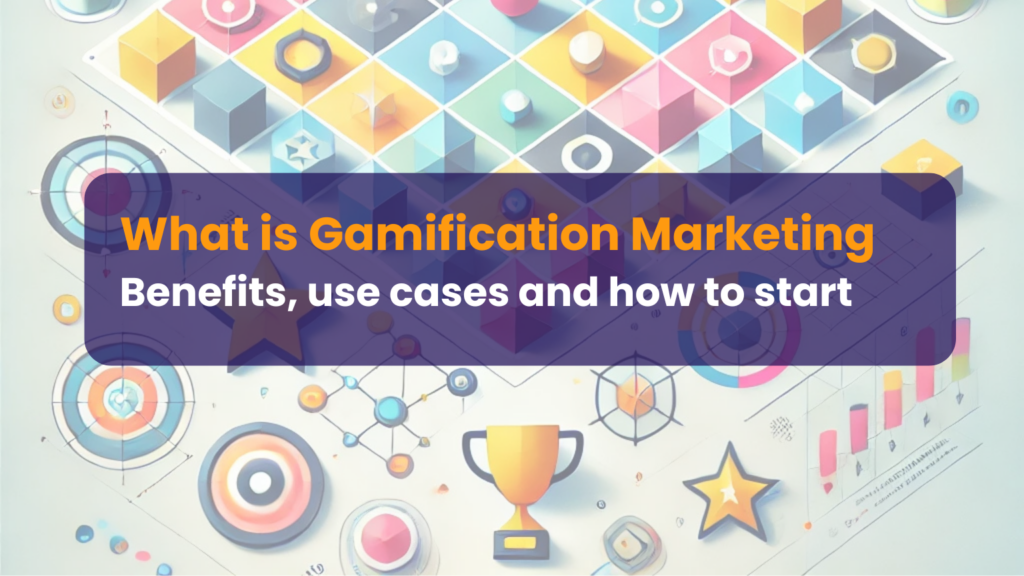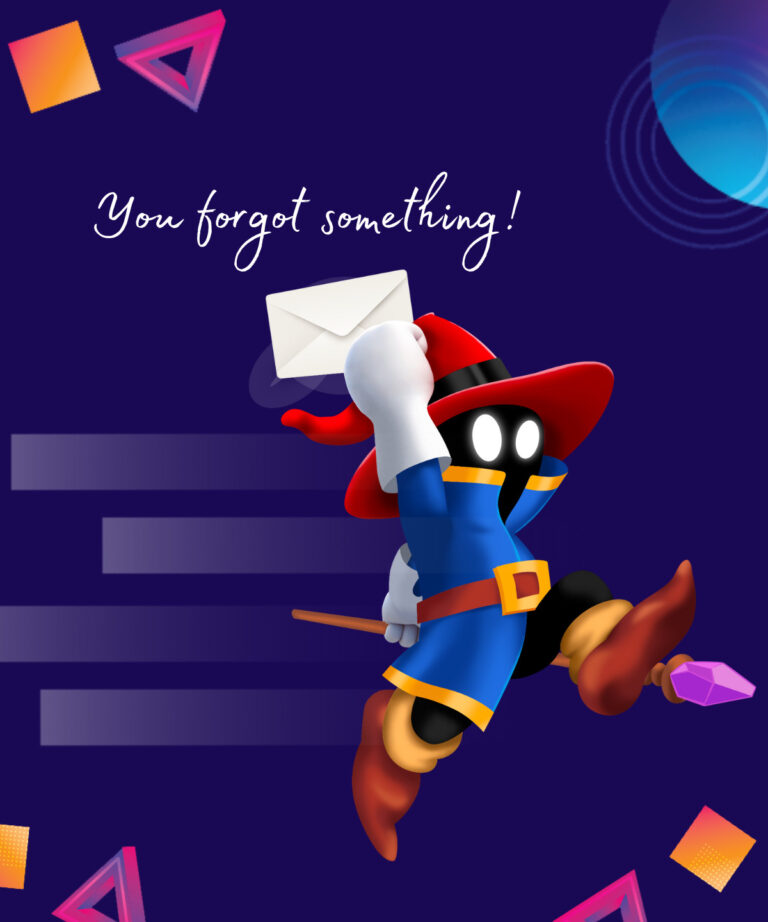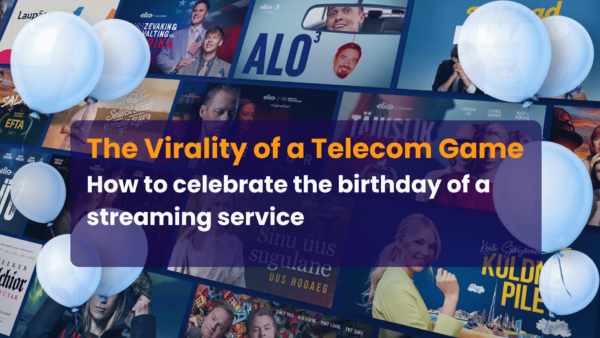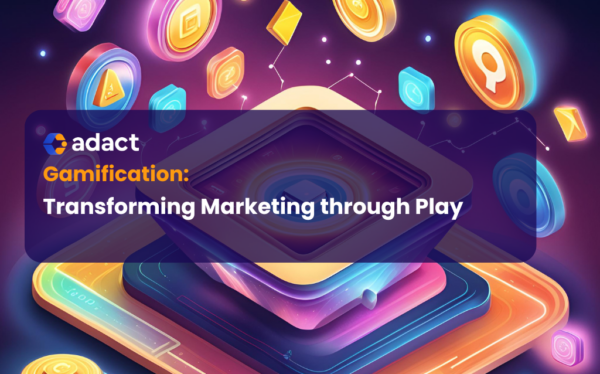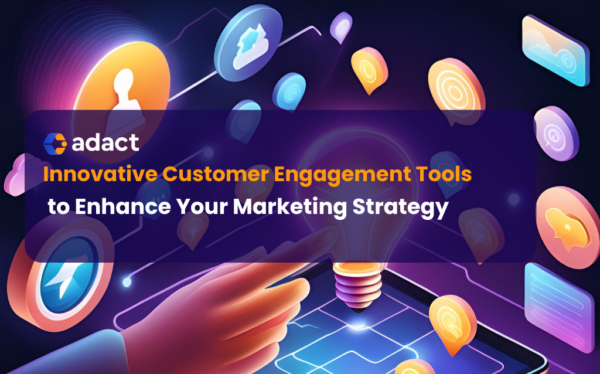What is Gamification Marketing?
If you’re wondering what gamification marketing is, then you’re at the right place.
Picture this:
Well, literally a picture. An image. A still frame.
It could be the most captivating image you’ve ever created, with a headline you can be truly proud of. But your target audience is still going to click, swipe or scroll away after a while.
And that’s not something you want.
So, take that concept, that image, that headline, and give your customer something to do. Give them something to make their brain work and their thumbs move. Give them something to play, and I can guarantee they’ll be interacting with your product for a whole lot longer.
In this post, we’ll cover what gamification marketing is, why it works and give some examples of it’s success. We’ll then talk about how you can implement it for your own growing brand with Adact.
What is gamification in digital marketing?
Gamification marketing is a technique that levels up a marketing campaign to include features commonly found in video games. These could involve elements like winning prizes, gaining points or experience, or even a skill-based activity.
Remember how old arcade games would have people coming back for “one more try”?
Gamified content can be used across a variety of platforms to keep people interested, engaged and around for longer. Methods can vary, from an interactive advert to hold attention for longer, to a reward scheme to encourage customers to return to your website.

Psychological Foundations of Gamification Marketing
How gamification influences behaviour
It’s been well established that children experience the world through what psychologists call “the language of play“. In short, they learn, develop and make sense of the world through games.
And this playful mindset never really disappears either:
Games will always remain an impactful way for humans to engage with the world around them.
Why? They’re fun! They give us a sense of accomplishment! And it’s this powerful combination that keeps us coming back for more.
Studies have shown that gamification can play a great role in increasing learning and memory. And this is something that can have a positive effect with your brand too! Need a new way to stand out competitively? Gamification can help your brand become memorable and familiar, fast.
We’re social animals at heart, and gamification strategy easily reinforces this as a concept. With the help of social media, novel games, scores and experiences will be shared globally, increasing visibility and traffic.
The role of motivation and rewards in gamification marketing
Imagine you’re scrolling through your favorite app when a message pops up:
“You’re only 50 points away from your next reward!”

You feel a spark of excitement. And this can push you to make another purchase, finish a task, or engage with the brand some more.
This is the magic of gamification in marketing—tapping into our natural desire for rewards and recognition. Motivation drives behaviour, and when you add rewards into the mix, it becomes an irresistible cycle. A sense of achievement pushes you forward, whether it’s earning a badge for hitting a fitness goal or unlocking a discount for completing a challenge.
In fact, gamified content can go further and create positive feedback loops in our brain. Having enjoyed a game, signals are sent to your brain that release, essentially, happy hormones. Our brains crave more of those hormones, thus increasing the chances of us returning to the game to get the same feeling again.
Key benefits of Gamification Marketing
Increased user engagement
Time increases familiarity. Familiarity increases trust. Trust increases the likelihood of a purchase.
When you create engaging experiences, your potential clients are kept engaged for longer. And this way, they're more likely to become familiar with your brand and products. So, by offering them a gamified experience over a regular one, the enjoyment and challenge the experience brings will keep them around. And even coming back for round 2!
Boosted brand awareness
Any enjoyable experience a potential customer has with a gamified campaign is an enjoyable experience with your brand. Gamified marketing creates opportunities for brands to stand out by engaging users in unique, interactive ways. Whether it’s through challenges, quizzes, or leaderboards, these game elements make people want to participate, talk about their experience, and share it with friends.
Having users actively engage with a brand's game is excellent for the brand. Consequently, your users are more likely to remember the brand because it’s tied to a fun experience they had.
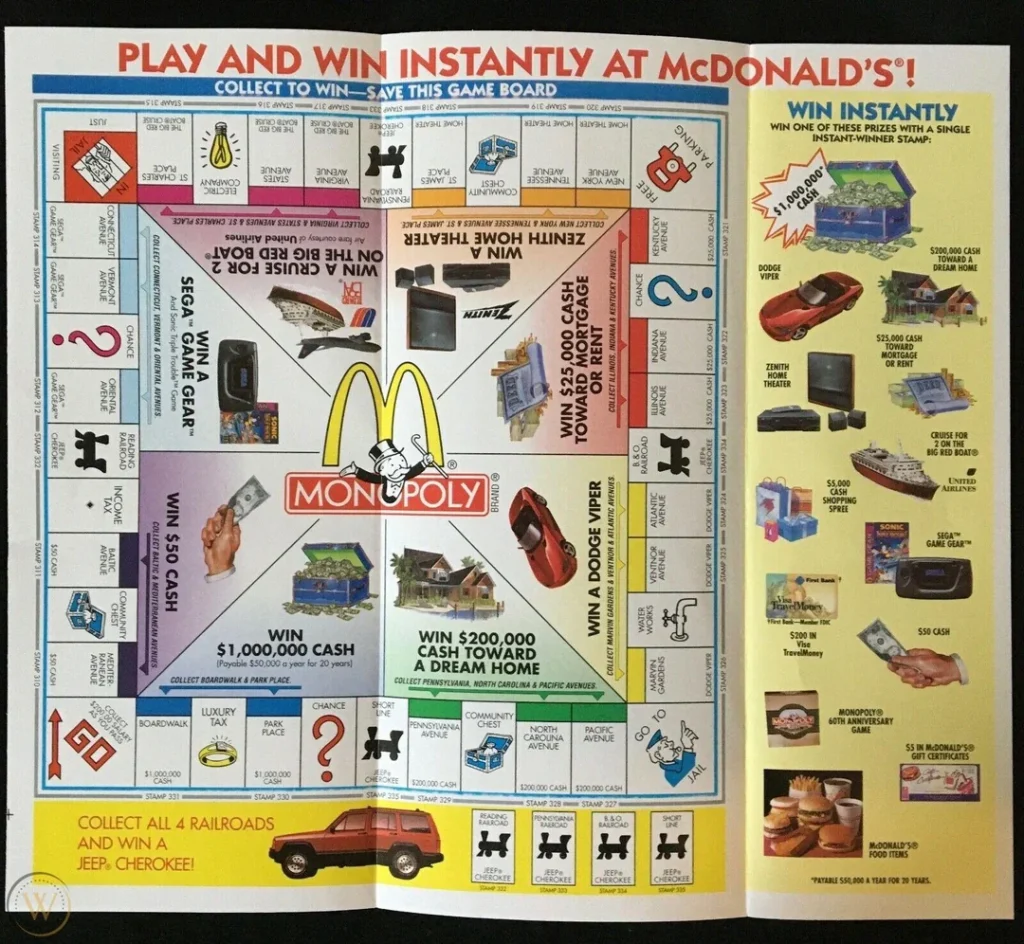
McDonald’s Monopoly is a perfect real-world example of this. People aren’t just buying a meal—they’re collecting game pieces, strategizing how to win, and returning for more. This turns a simple transaction into an ongoing relationship with the brand.
Enhanced customer loyalty
Gamified loyalty programs keep users returning. For example, whether it’s to complete the next achievement or badge, or whether it’s for another chance at the grand prize—the feeling that current customers are achieving something every time they interact with you is a powerful one. As a result, the customers feel increasingly valued. And this means they’re more likely to remain with you and take interest in your products.
Improved conversion rates
Gamification doesn’t just entertain—it’s a smart tool to drive conversions. By tapping into users’ competitive and reward-seeking instincts, gamified marketing can turn casual browsers into active customers.
Why not turn a regular online shopping trip into a game by throwing in a spinning wheel, offering prizes and discounts! All you have to do is enter your email or make a purchase to play. Suddenly, the idea of buying becomes more exciting—you’re not just shopping, you’re participating in a game. This simple gamified feature can lead to higher conversion rates by making customers feel they’re getting extra value from their engagement.
Data collection and consumer insights
By incorporating gaming elements into a marketing campaign, you’re creating a non-intrusive and enjoyable way to gather data from consumers. Nowadays, privacy is a big talking point, and people are getting more and more sensitive about their personal data. But the solution could be to offer a transaction – offer them something in return in the form of a fun interactive quiz with a reward at the end, or use a loyalty program as a chance to track shopping habits, consumer behavior or product preferences.
Effective Gamification Marketing Strategies (with Examples from Adact)
So, the theory of gamification sounds great. More engagement, greater customer satisfaction and more. But does it really work? Let’s speed run through some examples.
The success stories are everywhere, from Starbucks Rewards, where customers earn stars after purchases, to Duolingo, gamifying language learning through gaining XP and bonuses. Also, Nike+ demonstrate high levels of success with their Run Club, where participants can compete in global fitness challenges, displaying a great model of community gamification.
Trivia and questionnaires

When a basic landing page is enhanced with Adact trivia questions, average reading time has been shown to increase from 1.7 seconds to 40 seconds! So, not only do questionnaires show improved engagement. But you also know that potential clients will read more carefully because they want to get the questions right!
On top of 32% wanting to know more after they answer trivia questions, by providing a reward in a discount code, you’re encouraging an engaged customer to purchase your products. Hence, Adact offers a wide range of trivia options, from personality tests (helping you learn more about your customers needs) to hidden object games, increasing focus on specific products you want to shine a light on.
Branded minigames

Furthermore, minigames are a tried and tested method that grab your attention, and keep it. Taking inspiration from mobile games, they use bright colours, easy concepts and familiar gameplay to hold the attention and help you stand out from the competition.
For example, when Adact worked with Euronics, we took the classic “Candy Crush” formula, and added JBL Live Pro Headphones to create a captivating interactive game that really drew attention to the JBL brand. The game saw huge customer engagement, with 6100 unique visitors to their webpage, for an average time of 16.2 minutes!
Lotteries and raffles

Through research, Adact found that 76% of site visitors find pop-up’s that ask for an email in return for a discount tedious and annoying.
Yet we all know how important those emails and that engagement are…
By using gamified elements that same pop-up, such as a prize raffle, Adact found that people are 2.5 times more likely to engage, thanks to the Loss Aversion theory.
Winning something feels a lot better than simply being given it. The positivity that lottery games can generate go a long way in creating loyal customers, especially if they can return daily for another chance at a prize. Adact offer a variety of ways to do this, from a classic wheel spin to something a bit more festive like an advent calendar!
Gamified surveys
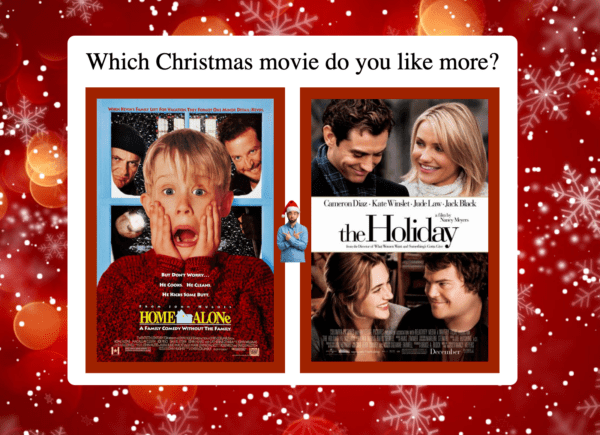
We’re really proud of our survey tool at Adact, where we regularly see 80% or higher response rates. In fact, we think it’s the best on the market!
Why is it so powerful?
With 13 unique question types, users will stay engaged and entertained for longer.
For example, EKSL (Estonian Insurance Association) recently used our survey tool to try to increase awareness of life insurance policies. Within just a week, EKSL had over 1000 new customers join! The unique survey made something as uninspiring as life insurance engaging and attractive!
Loyalty reward systems

Studies show that loyalty systems increase customer retention by 30%. Thanks to Adact’s range of gamification techniques, you could also see this type of effect in your company.
The excitement of games and the fun they bring can see people coming back time and time again, whether that’s to one of your stores, your website or app. From a leaderboard creating competition among your clients, to a treasure hunt, drawing attention to specific lines or products you’re promoting, you’ll be sure to find something effective you can use.
Gamification Marketing: How to Start
Gamification has become a powerful tool in marketing, allowing brands to engage users in fun and rewarding ways while driving key business outcomes. We’ve seen how companies like yours can encourage customer participation, boost loyalty, and ultimately increase conversions. But how do you get started? Implementing gamification isn’t just about making things more entertaining—it requires careful planning and understanding of both your audience and business goals. After booking a demo with Adact, what are the next steps you should take?
Understand your target audience
The first and most crucial step is to understand who your audience is and what motivates them. Gamification will only succeed if it resonates with your specific audience. Take the time to research your target market—what are their interests? You’ll also need to consider what type of gamified experience your audience will enjoy. Some users may respond well to competition, such as leaderboards or challenges, while others may prefer personal progress tracking, like leveling up or earning badges. Understanding your audience’s preferences and behaviors will guide you in designing a gamified experience that feels natural, engaging, and relevant to them.
Set clear goals for gamification marketing campaigns
Now we have our target, the next step is setting goals; clear and measurable. Ask yourself why you’re adding gamification to your marketing in the first place – do you need to increase user engagement, boost brand awareness, drive conversions, or gather consumer insights?
Ensure to match the gamified content with the goals you have in mind. For instance, if your goal is to increase email sign-ups, you could create a gamified feature where users get a chance to spin a virtual prize wheel after providing their email. If you’re looking to encourage repeat purchases, you might design a points-based loyalty program where users earn rewards for every purchase and eventually unlock discounts or exclusive offers.
Give rewards that motivate

At the heart of gamification is the concept of rewards. But not all rewards are created equal—what motivates one group may not excite another. The key is to offer rewards that truly resonate with your target audience and encourage the user behavior you want to see.
The rewards should be attainable but still require effort. If users feel that the reward is out of reach, they might lose interest. Conversely, if the rewards are too easy to obtain, they may not feel valuable enough to drive long-term engagement. Striking the right balance is key to maintaining motivation.
Draw your conclusions and run an even better gamification campaign the next time
After your gamification campaign has run its course, it’s time to evaluate its success. Did it meet your original goals? By analyzing the data, you can monitor things like engagement rate, sign-up rates and even if sales increased on a certain product.
Take note of what worked well and what didn’t. For example, maybe your potential customers responded positively to a specific reward, but a particular game mechanic didn’t drive the engagement you expected. If it didn’t, you can edit content for the next, more successful campaign.
Conclusion
To summarize, gamification in marketing is a fantastic way to grab your audience’s attention, build brand awareness, and encourage action.
By turning everyday interactions into fun experiences—whether through points, rewards, or challenges—you can tap into people’s natural love for games, competition, and achievement. The key is knowing your audience well, setting clear goals, and offering rewards that really get them excited.
Whether you’re aiming to boost engagement, drive conversions, or gather insights, Adact can help you create interactive and memorable ways to connect with your audience.
We’ll inspire you to create experiences that are both fun and rewarding, leaving customers feeling more loyal and connected to your brand.
So, let’s start experimenting and refining your approach—you’ll soon see how effective gamification can be for your business!
Gamification marketing FAQs
What is gamification marketing?
Gamification marketing involves using game-like elements such as points, challenges, rewards, and competition to engage customers, boost interaction, and encourage specific behaviors in a fun and interactive way.
How to implement a gamification marketing strategy?
Start by understanding your target audience, setting clear goals, designing engaging game mechanics, and offering rewards that motivate users. Test, gather data, and refine the strategy over time.
What are the advantages of gamification in digital marketing?
Gamification boosts engagement, increases brand awareness, encourages repeat interactions, and provides valuable consumer data through interactive experiences.
What are the disadvantages of gamification in digital marketing?
Gamification can be costly to develop, and if not well-designed, it may fail to engage users or deliver expected results, potentially leading to user fatigue. Adact can help with these issues, offering a wide range of solutions that can be developed quickly.
What are the key components of gamification?
The key components include some form of reward, like points, badges or XP, and some kind of game concept, both which are designed to motivate user participation and achievement.
Why is gamification marketing effective?
It taps into human psychology by leveraging competition, rewards, and fun, making customers more engaged and loyal to a brand.
How can gamification be used in digital marketing?
It can be applied through loyalty programs, interactive quizzes, challenges, rewards systems, and social sharing elements to drive user participation and conversions.
